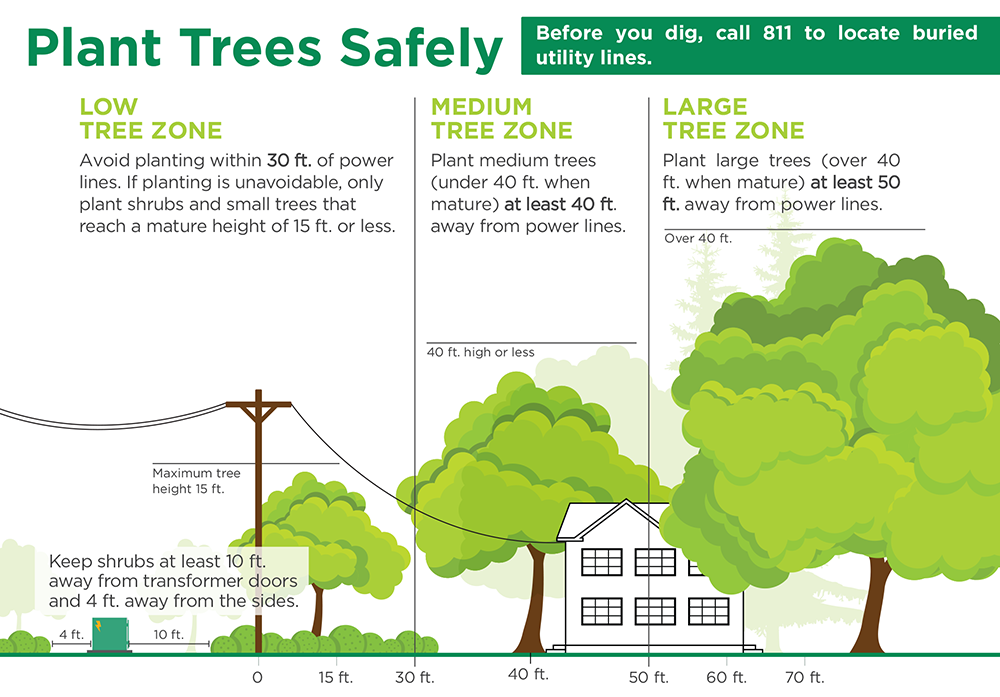VEGETATION MANAGEMENT
North Star Electric Cooperative strives to maintain and improve the safety and reliability of your electric service. An essential part of providing safe, reliable service at a reasonable cost is the establishment and maintenance of a clear power line corridor. Proper vegetation management consists of removing trees, mowing underbrush, controlling vegetation growth, trimming limbs that extend into the right of way and cutting what is classified as danger trees. A danger tree is a tree that, if it fell, would hit the main power line.
When tree limbs grow too close to power lines they can cause damage or interrupt your service, causing a blink or an outage. Trees located in a utility right-of-way can also increase the time it takes to restore power after a major storm that may have damaged power poles and lines. When a tree limb comes into contact with a power line, it can also pose a safety hazard, due to the possibility of shock injury or fatal electrocution to a person touching or climbing a tree.
Trees can add tremendous value to our homes and communities. Besides being a source of beauty in our landscapes they provide food and shelter for wildlife, cooling for our homes, cleansing of our air and a multitude of other benefits. However, trees growing near power lines present some real challenges. Each year, North Star crews do a visual inspection of our power lines to identify areas where tree clearing or trimming may be needed.

RIGHT-OF-WAY MAINTENANCE FAQ'S
The cooperative believes trees are an important part of our environment and community. To avoid dangerous situations and threats to our system, North Star suggests planting trees in the right place. As you landscape your property, remember to "look up," and use the guide above for planting near overhead power lines.
For underground lines on your property, maintain a clearance of 10 feet on either side of the line. This provides room for utility maintenance equipment to access and repair lines when necessary.
